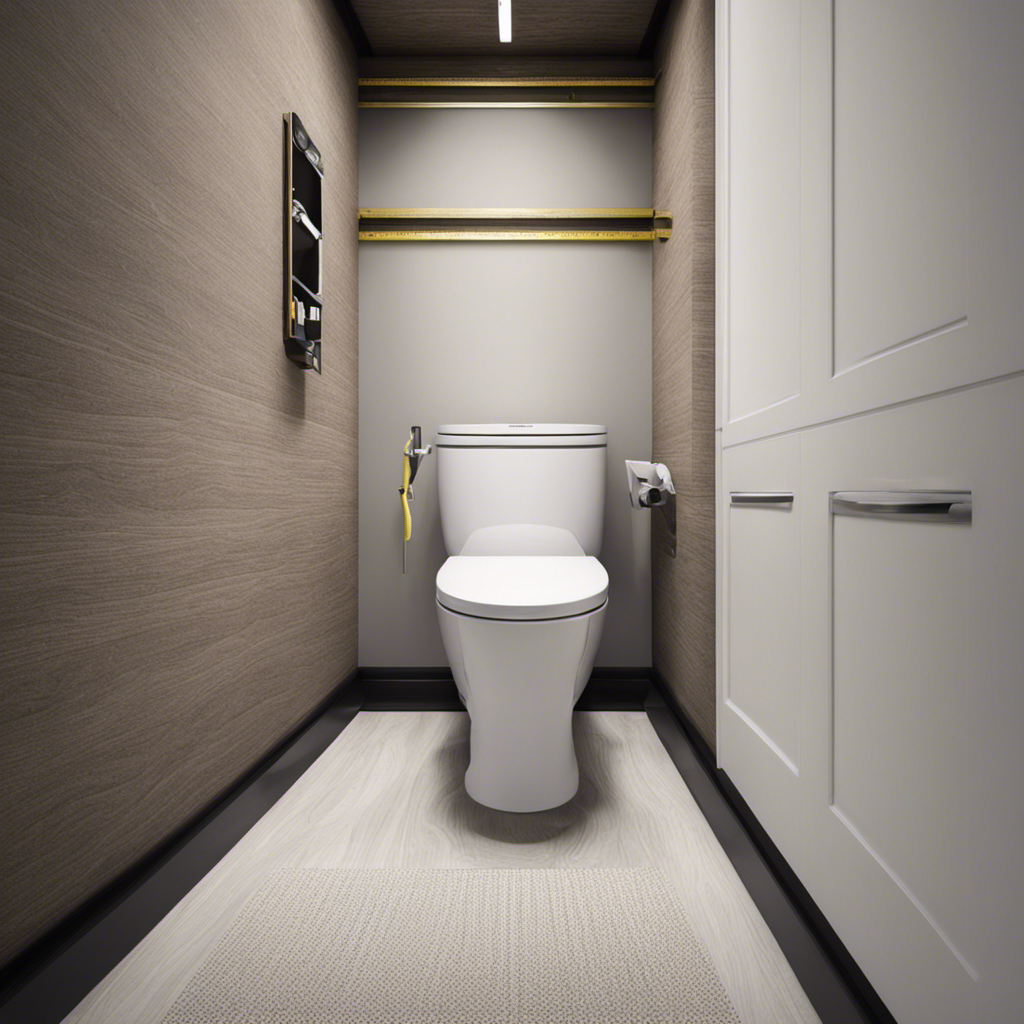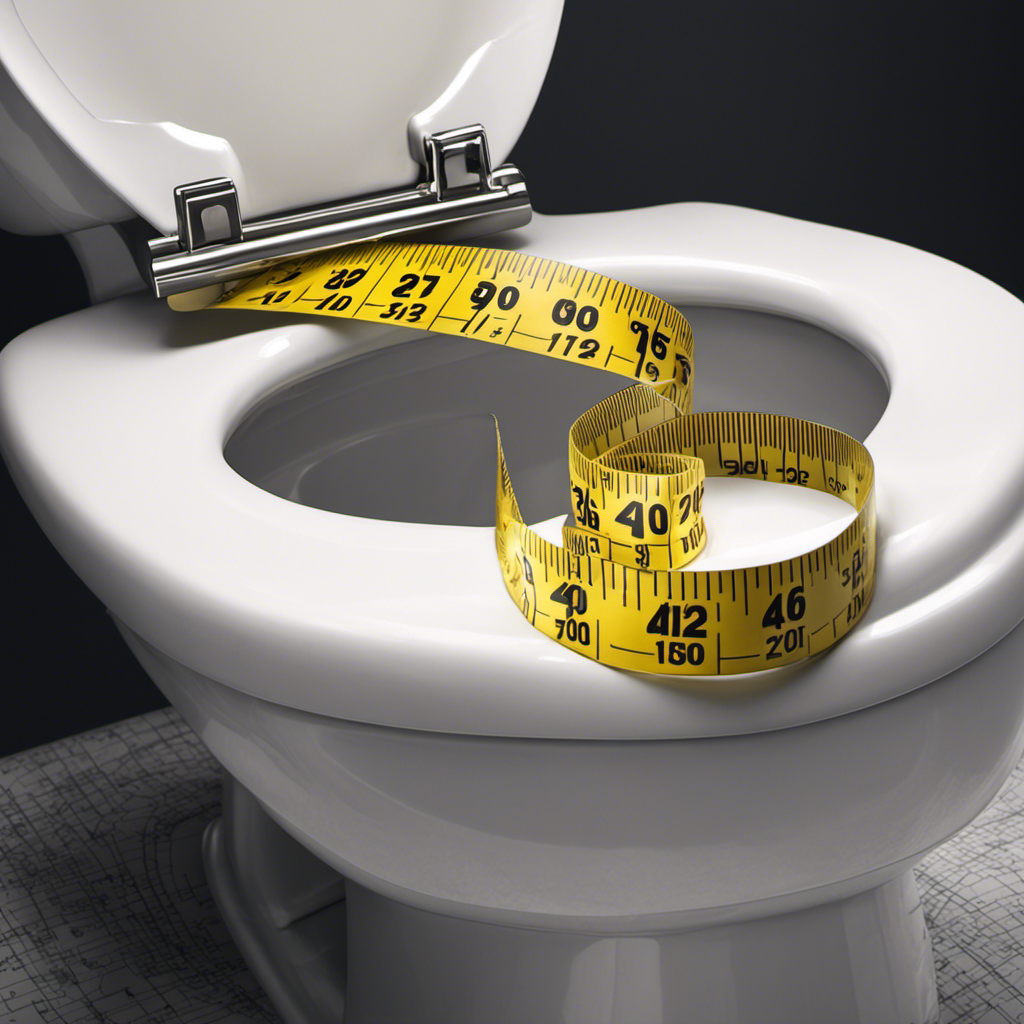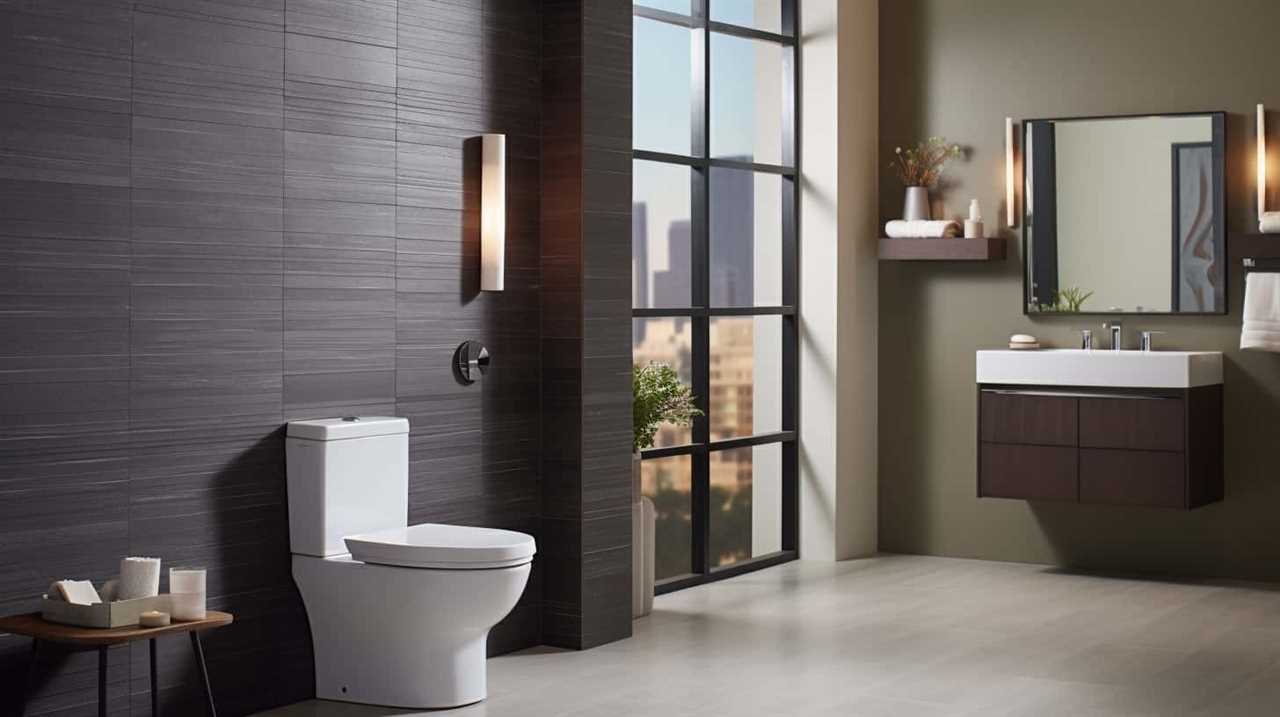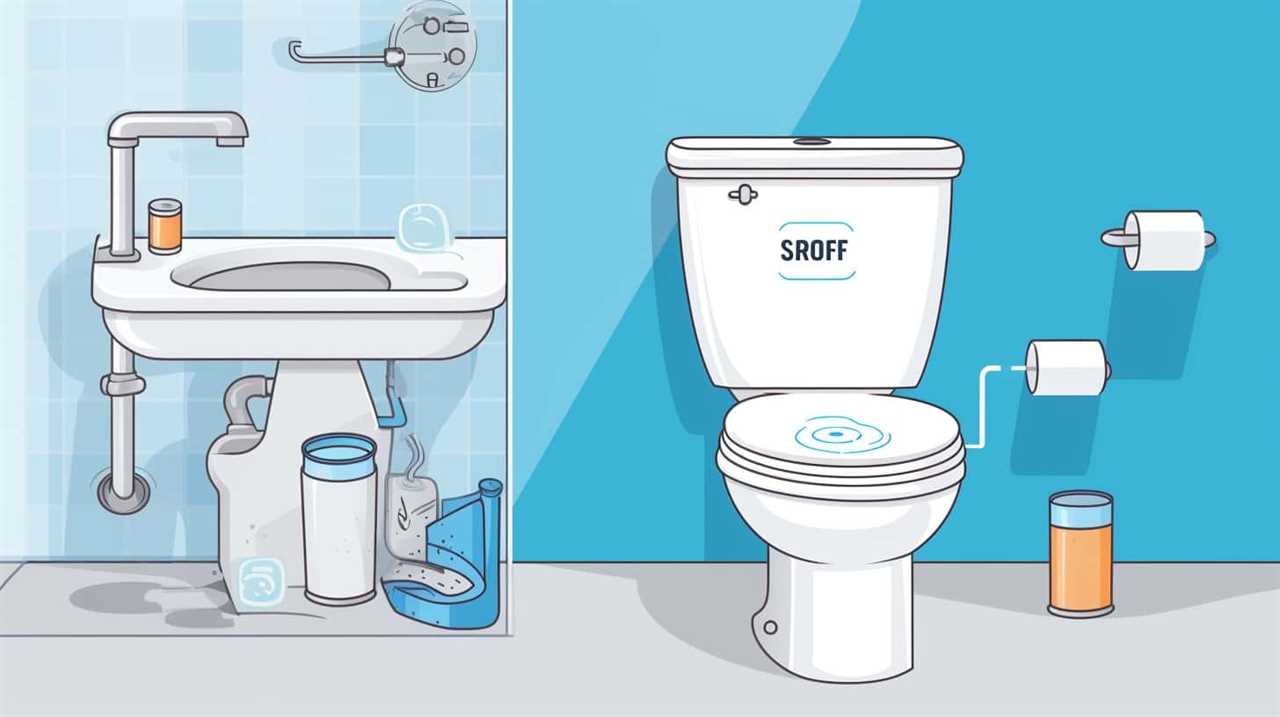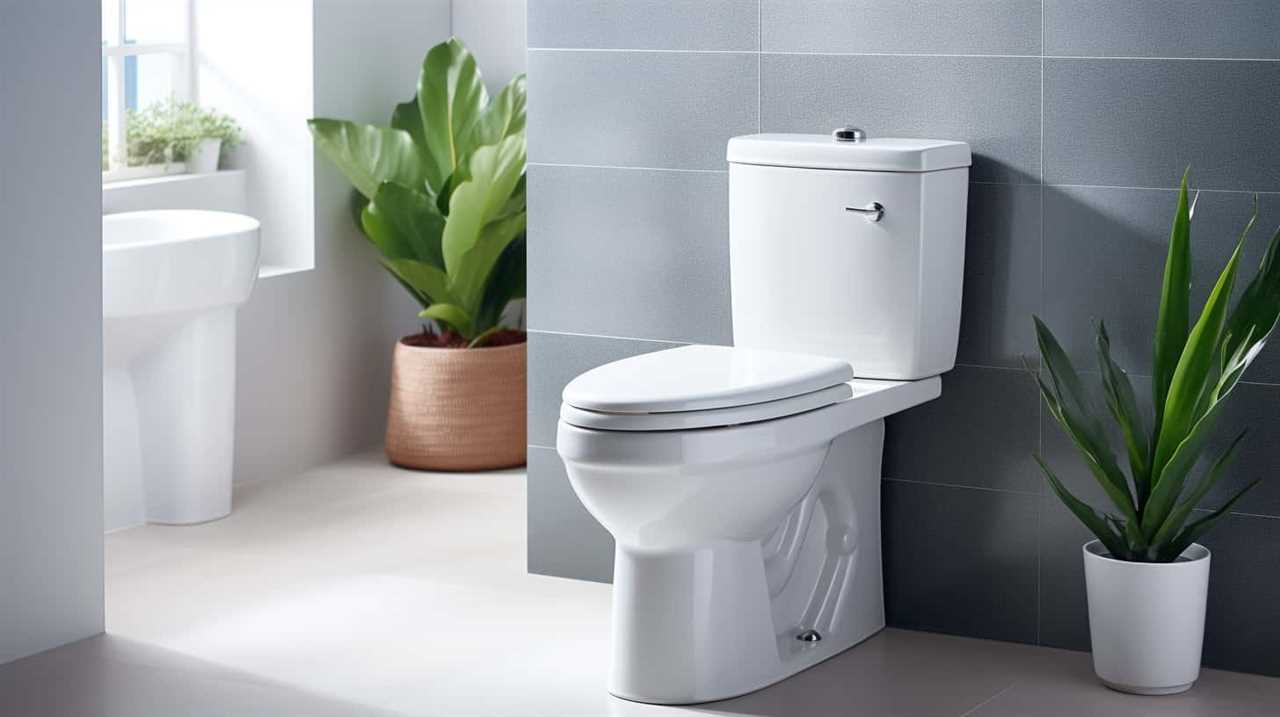I’ve always believed that proper toilet installation is key to maintaining the functionality and value of a home.
Did you know that the rough-in distance, which is the space between the drainage pipe and the wall, determines the size of toilet that can be installed?
With the standard rough-in measurement typically being 12 inches, it’s crucial to measure this accurately.
In this guide, I’ll walk you through the process of measuring a toilet rough-in, along with other important considerations, to ensure a proper installation.
Key Takeaways
- The rough-in measurement of a toilet is the distance between the center of the drainage pipe or flange and the wall.
- The standard rough-in measurement is approximately 12 inches, but there may be exceptions like 10 or 14 inches.
- The toilet tank should have a guide outlining the distance between the back of the tank and the center of the toilet base (rough-in measurement).
- It is important to check local plumbing codes for the required space in front of the toilet, which can vary between 21 to 24 inches.
Measuring the Rough-in Distance
I need to measure the distance between the center of the drainage pipe and the wall to determine the rough-in measurement for proper toilet installation.
The rough-in measurement refers to the distance from the center of the drainage pipe or flange to the wall behind the toilet. It is important to ensure that the measurement is taken from the center of the rough-in, not the skirting board.
The standard rough-in measurement is approximately 12 inches, but there may be exceptions like 10 or 14 inches. Accurate measuring techniques are crucial to eliminate toilet selections that don’t match the rough-in measurement.
To do this, use a measuring tape and measure from the center of the flange to the wall. This will ensure a proper fit for the toilet during installation.
Determining Toilet Selection Based on Rough-in Measurement
Before purchasing a toilet, it’s important to check the rough-in measurement to ensure a proper fit. By measuring the distance between the center of the drainage pipe or flange and the wall, you can determine the correct rough-in measurement.
This measurement is crucial in choosing appropriate toilet models that will fit your bathroom space. If your rough-in measurement is not standard (approximately 12 inches), finding alternative solutions may be necessary. Use the rough-in measurement to eliminate toilet selections that don’t match.
Additionally, consider the space on either side of the toilet, aiming for at least 15 inches from the center of the flange. Checking local plumbing codes for the required space in front of the toilet is also essential.
Additional Measurements for Proper Installation
Checking the local plumbing codes is crucial to ensure compliance and avoid any issues during the installation process. Here are the additional measurements you need to consider for proper installation:
-
Measuring the water supply line: Measure the length of the old water supply tube to determine the correct length needed for the new toilet’s water supply line. This ensures a secure and functional connection.
-
Determining code requirements: Check local plumbing codes for the required space in front of the toilet. The IPC requires a minimum of 21 inches, while the UPC requires 24 inches. Non-compliance with plumbing codes may lower the value of your house, so it’s essential to consider the code requirements when installing the toilet.
Ensuring Compliance With Plumbing Codes
To ensure compliance with plumbing codes, it is important to be aware of the required space in front of the toilet. This is determined by the rough-in measurement, which refers to the distance between the center of the drainage pipe or flange and the wall.
The standard rough-in measurement is approximately 12 inches, but there may be exceptions like 10 or 14 inches. It is crucial to use this measurement when selecting a toilet to ensure it fits properly.
Additionally, check local plumbing codes for the required space in front of the toilet. The International Plumbing Code (IPC) requires a minimum of 21 inches, while the Uniform Plumbing Code (UPC) requires 24 inches.
Adhering to these codes is essential for maintaining the value of your home and ensuring a safe and functional bathroom.
Proper Measurement of Water Valve and Supply Line
I need to measure the length of the old water supply tube to determine the ideal length for the new toilet’s water supply line. Here is a step-by-step guide on measuring the water valve and selecting the right supply line:
-
Locate the water valve: The water valve is typically located on the wall behind the toilet. Find it and make note of its position.
-
Measure the old water supply tube: Use a tape measure to determine the length of the existing water supply tube. This measurement will help you select the correct length for the new supply line.
-
Avoid using a supply line that is too long or too short: It is important to choose a supply line that is just the right length to ensure a secure and functional connection between the water valve and the toilet tank.
-
Connect the water valve to the tank: Once you have determined the ideal length for the supply line, connect the water valve to the toilet tank using a suitable supply line.
Measuring Space on Either Side and in Front of the Toilet
Adequate space on either side of the toilet allows for comfortable use and maintenance. When measuring the space on either side of the toilet, it is important to aim for at least 15 inches from the center of the flange to both the left and right sides. This is crucial for maximizing bathroom space and ensuring that the toilet fits correctly within the available area.
Additionally, it is essential to consider the importance of proper toilet clearance in the front. Check your local plumbing codes to determine the required space in front of the toilet. The International Plumbing Code (IPC) requires a minimum of 21 inches of unused space, while the Uniform Plumbing Code (UPC) requires 24 inches.
Non-compliance with these codes may lower the value of your house, so it is crucial to consider these requirements when installing the toilet.
Frequently Asked Questions
Can I Install a Toilet With a Rough-In Measurement That Is Different From the Standard 12 Inches?
Yes, you can install a toilet with a rough-in measurement that is different from the standard 12 inches. There are alternative rough-in measurements, such as 10 or 14 inches, which may require specific toilet selections.
How Do I Determine the Correct Length for the New Toilet’s Water Supply Line?
To determine the correct length for the new toilet’s water supply line, measure the old supply tube. Various types of supply lines are available, including flexible stainless steel and braided polymer.
What Are the Consequences of Not Complying With Plumbing Codes in Terms of Toilet Installation?
If plumbing codes are not followed when installing a toilet, there can be serious consequences. Non-compliance may lead to lower home value and potential legal issues. It’s crucial to adhere to codes for safe and proper installation.
Are There Any Specific State Regulations or Plumbing Codes That I Should Be Aware of for Toilet Installation in My Area?
There are specific state regulations and plumbing codes that I should be aware of for toilet installation in my area. These regulations outline the specific requirements and installation guidelines to ensure compliance with building standards.
What Is the Recommended Amount of Space Needed on Either Side of the Toilet for Comfortable Use and Maintenance?
When measuring the toilet rough-in, it is recommended to have at least 15 inches of space on either side for comfortable use and maintenance. This ensures that the toilet fits correctly within the available space.
Conclusion
In conclusion, accurately measuring the rough-in distance is crucial for the proper installation of a toilet. By following the guide’s instructions, homeowners can ensure that they select a toilet that fits their specific rough-in measurement.
Additionally, taking into consideration other measurements such as the length of the water supply tube and the required space around the toilet will contribute to a successful installation.
Lastly, it is important to comply with plumbing codes to maintain the value of the home. By adhering to these guidelines, homeowners can confidently install their toilet with precision and efficiency.
